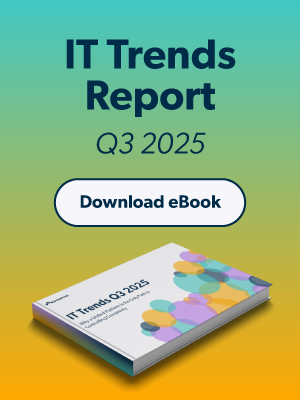The hard truth is this: For decades, IT has been operating under a philosophy that is obsolete and counterproductive.
It’s a mindset that treats employees like problems to be fixed and demands to be managed.
Many have witnessed the consequences: the transactional, ticket-closing IT organization focused on minimizing friction for themselves rather than maximizing success for the business. This model is not just inefficient; it’s actively crippling the innovation and morale of the modern enterprise.
The solution isn’t another tool or a bigger budget. It’s a fundamental shift in philosophy, a deliberate embrace of what can be called Values-Driven IT.
The Scarcity Mindset is a Strategic Liability
In a recent episode of the Make Work Happen podcast, the discussion with venture capital legend Brad Feld highlighted his “Give First” principle—the engine behind the success of communities like Boulder, Colorado. Feld’s work argues for an abundance mindset—the belief that investing energy without a guarantee of immediate return creates compounding value.
This insight is the key to unlocking modern IT. The traditional IT model is built on scarcity: We have scarce time, scarce resources, and scarce attention, so we must guard them. This mindset breeds:
- Transactional Relationships: The interaction ends the moment the ticket is closed, erasing any trust built.
- Reactive Posture: IT is seen as the organization’s “firefighter,” only showing up when there’s a disaster.
- Zero-Sum Thinking: The perception that an employee’s successful enablement costs IT, creating an adversarial dynamic.
The scarcity approach is arguably a strategic liability. A truly secure, efficient, and innovative company cannot be built when the core technology enablers—the IT team—are operating from a place of less.
The Power of “Unconditional, Joyful Tech Support”
Values-Driven IT adopts the “Give First” philosophy as its operating system. It’s an abundance mindset that views every interaction not as a drain on resources, but as an opportunity to invest in the employee’s capability and the long-term relationship.
Feld’s insights highlight a crucial shift: IT leaders must transition from being “task-doers” to “pain absorbers.” This means approaching a frustrated end-user with genuine empathy, absorbing their anxiety and frustration, and focusing on solving the problem with unconditional, joyful support—even if it’s a recurrent or basic issue.
Why is this essential? Because this behavior re-wires the user-IT relationship.
- It moves IT out of the hierarchical, one-down position, where the user feels inferior for needing help.
- It establishes IT as a peer-to-peer enablement partner—an ally whose primary objective is the success of the business.
When an IT organization consistently gives first—when it refuses to be cynical, and instead chooses to proactively solve for the user’s success—it gains the most powerful currency in business: trust.
The Future Belongs to the Givers
The argument is simple: IT that operates with a defined set of “Give First” values is not just a nicer place to work; it’s a better performing business unit.
Trust gives IT the influence to drive necessary security policies. Respect allows them to lead complex digital transformation initiatives. And an abundance mindset allows the team to pivot from simply managing technology to proactively enabling the next phase of business growth.
If an IT organization is seeking future success, it must decide what kind of team it wants to build. One defined by closed tickets and scarcity, or one defined by successful, enabled employees and abundance? The future of business depends on choosing the latter. It’s time to stop waiting for employees to be grateful and start giving them unconditional, joyful support first.
Watch the episode for even more insights:




